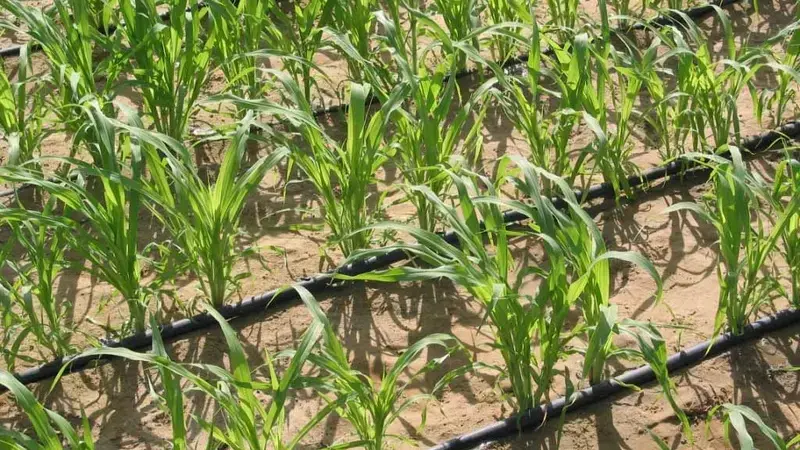Efficient irrigation systems: achieving more ‘crop per drop’

In an effort to conserve scarce water resources and stabilize wheat production, the ‘Enhancing Food Security in Arab Countries’ initiative is promoting more efficient irrigation systems. The systems promoted include ‘drip irrigation,’ a form of irrigation that allows water to drip slowly to the roots of crops.
The results achieved during the initiative’s first phase are encouraging and demonstrate that the recommended irrigation packages can replace conventional systems, which remain highly inefficient. Higher and more stable yields are also expected to deliver better incomes and improved livelihoods for farmers across the Arab world’s wheat-producing regions.
What are the benefits of ‘drip irrigation’ for participating countries? Impacts during the initiative’s first phase (2010-2014):
In Tunisia, the initiative measured Water Use Efficiency (WUE) rates – the amount of crop produced per m3 of water - for systems with 50 and 100 cm spacing between lines. The rates recorded - 1.4 kg/m3 and 1.26 kg/m3 respectively – far exceeded those for sprinkler systems on farmer lands, and In 2013/14 drip irrigation generated impressive yields of 6.57 tons per hectare (t/ha).
Effective irrigation scheduling was also investigated to determine scenarios that could save irrigation water. The use of SMS technology was found to be particularly useful – it helped inform farmers when they should apply irrigation water for optimal gains and savings, which in turn, increased grain yields and improved water productivity.
In Morocco, drip irrigation achieved a WUE of 1.3 kg/m3, surpassing the measurements for basin (1.05 Kg/m3) and raised-bed (0.93 Kg/m3) irrigation systems. Total production was also higher under this form of irrigation.
Likewise, in Sudan, the WUE for drip irrigation was 2.03 Kg/m3, compared to 1.73 and 1.80 kg/m3 for sprinkler and surface irrigation systems. And in Yemen, results obtained in 2013/14 also showed the clear advantages of a shift to drip irrigation: WUE almost doubled compared to surface irrigation, and wheat yields were 18 percent higher.
